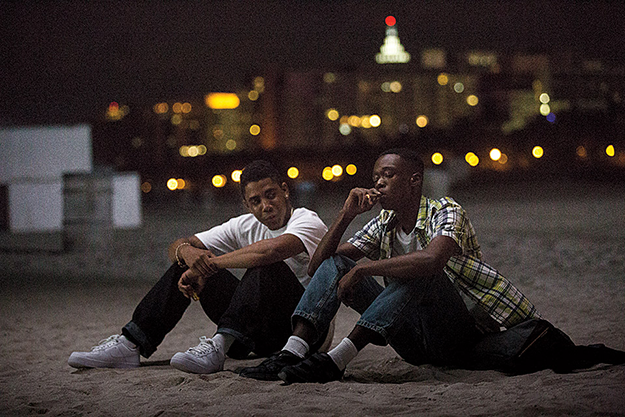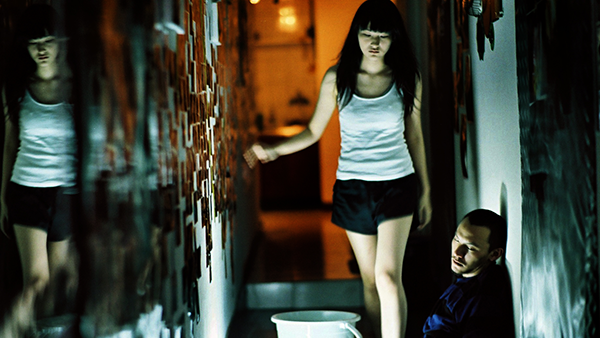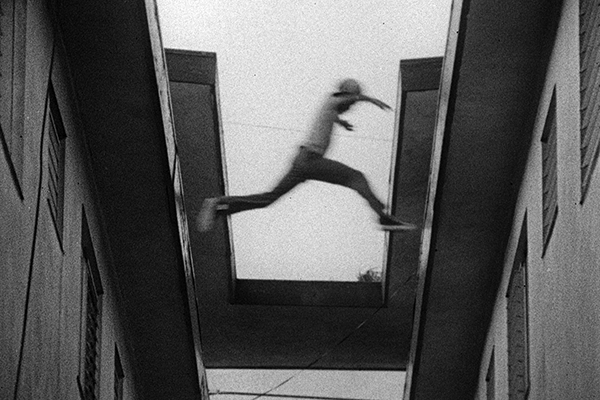Shedding Some Light
This personal essay by Barry Jenkins was written on the occasion of the Film Society of Lincoln Center program Illuminating Moonlight, guest-curated by the filmmaker and screening January 4 to 9.

Moonlight
When I first read Tarell McCraney’s play In Moonlight Black Boys Look Blue, I wasn’t sure what to make of it. It was radical in form and dense in meaning, and the film version of what I’ve always described as something “halfway between the stage and the screen” didn’t readily present itself.
And then I remembered Three Times, Taiwanese director Hou Hsiao-hsien’s triptych about three young couples, portrayed by the same pair of actors (Qi Shu and Chen Chang), navigating the intricacies of courtship and companionship. The conceit of Hou’s wonderful, breathtaking film was the contextualization of similar relationships against three different time periods: 1966, 1911, and 2005. Watching it at the Telluride Film Festival, I was struck by how freeing the structure was for the viewer. Rather than straining to follow continuity across the three stories, I found myself drifting into a deeper understanding of the film’s central relationship, with a clearer understanding of how societal norms play a large role in the performance and presentation of love.

Three Times
I hadn’t thought about or seen Three Times in years, yet there it was, a film I’d stumbled into and loved at a festival years prior, readily bringing itself forward as the answer to a dense riddle. (How do I unpack Tarell’s voice, meld it with my own, and present what ultimately would become Moonlight to an audience?) Intellectually, the path from here to there is rarely ever clear to me; I can’t watch Hou’s film and know that someday it will provide the “eureka moment” that will send me on my way. In a world where visual stimulus surrounds us—whether staring at a 15-second teaser on our phones or sifting through Vimeo thumbnails on our Apple TV—I like to think that such influences are asserting themselves all the time, the things we see manifesting themselves in the things we make.
In the case of Moonlight, the influences are wide-ranging, from Claire Denis’s Beau travail to Kahlil Joseph’s Until the Quiet Comes. In curating this lineup of cinema inspirations for the Film Society of Lincoln Center, I sought to draw from films that could be more felt in the workings of Moonlight rather than seen (though in the case of Wong Kar Wai’s Happy Together, the reference is undoubtedly seen). The six features and two shorts included here span a wide range of shapes and influences for me. Few are as clearly applicable as the structural influence of Three Times or the visual homage to Happy Together. All, however, are films I cherish and return to over and over again, reminders of why I love cinema and the infinite possibilities available to us as we utilize the form to conjure life and transmute empathy.
* * *

Killer of Sheep
“It’s not where you take things from—it’s where you take them to.”
I love that quote from Jean-Luc Godard. Where then am I taking things from? In the works of Hou, Wong, and Nagisa Oshima, from a world away, the globe’s most populous continent and the place I first found myself enamored with cinema. On to France (by way of the French Foreign Legion’s presence in Djibouti) for Beau travail, my favorite film by my favorite filmmaker. In Charles Burnett’s wondrous Watts-set masterpiece Killer of Sheep, a film I saw for the first time while an adult . . . yet which I very much wish I had seen as a child. And Carlos Reygadas’s Silent Light—his treatment of sun-blazed faces and wide-open spaces; pulchritude, corporeality, serenity.
And then there are the shorts. Kahlil Joseph’s Until the Quiet Comes and Phil Collins’s The Meaning of Style. As a curator for the Telluride Film Festival, I view hundreds of shorts and, without exception, in most years some of the most inspiring work I see is under 30 minutes. Kahlil and Phil’s works are two of the shortest in that group and yet are among the most breathtaking. I find myself humbled by the scope of their storytelling at such scant runtimes. Given their brevity, I’ve seen both of these films more times than I care to admit. In their brevity, they illustrate what’s possible in the medium when form and curiosity are wielded with passion.
To share a week at Lincoln Center with either one of these films would be a grand achievement. To be in league with the full run of them is a privilege.
Much love,
Barry Jenkins
For more on Moonlight, see our Film Comment interview with Jenkins, “Song of Myself,” from the September/October 2016 issue.
Barry Jenkins is the director of Moonlight and Medicine for Melancholy.







